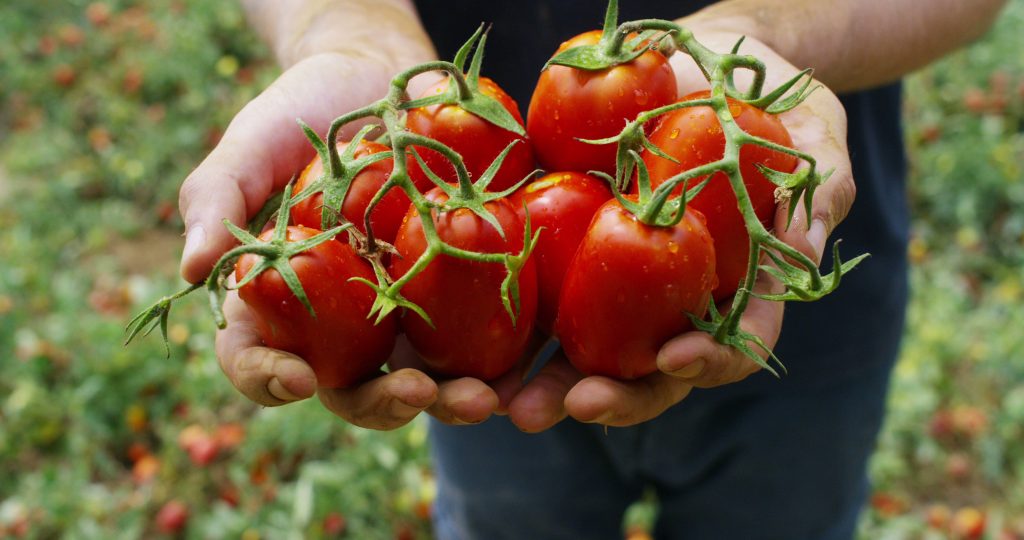What Buyers of Bulk Tomatoes Should Expect
California’s renowned tomato fields are the backbone of the wholesale tomatoes market, supplying food manufacturers and brands worldwide. But in 2025, the landscape is shifting yet again. Reduced acreage, condensed harvest windows, and tighter yields are shaping what promises to be a pivotal season for bulk tomatoes sourcing.
Whether you oversee purchasing, R&D, or procurement, understanding this year’s outlook will be essential to secure reliable inventory at competitive prices.

Reduced Acreage and Lower Yields Will Tighten Wholesale Tomatoes Supply
The USDA’s May 2025 California Processing Tomato Report shows acreage at 205,000 acres, the lowest since 1972. Although yields are still projected to remain strong at around 50.24 tons per acre, total production will only reach 10.3 million tons, marking the smallest crop since 2006.
Here’s what’s driving the shift:
- Drought Recovery & Weather Swings: After years of drought and then record rainfall in 2023, growers are recalibrating plantings to avoid oversupply.
- Inventory Adjustments: The industry faced a large carryover in 2023 due to near-perfect late-season growing conditions. This year’s lower tonnage is an intentional move to stabilize supply.
- Cost Pressures: Although the 2025 field price has decreased to $109/ton (down from $112.50 in 2024), the combination of tighter supplies and steady demand for bulk tomatoes could still keep pricing firm.
Condensed Pack Season Means Less Flexibility for Bulk Tomatoes Orders
The 2025 pack season is expected to start right after July 5 and wrap up by mid-to-late September. This shorter window leaves less room for late adjustments to volumes or specifications. Unlike previous years when processors could extend pack runs, this year’s reduced crop and condensed schedule will require earlier commitments.
Food manufacturers relying on wholesale tomatoes in formulations—from pizza sauces to ready-to-serve soups—should plan forward contracts well in advance.
Why This Matters for Bulk Tomatoes Buyers
With total supply hovering around 96%–100% of the 10-year average, the market is balanced—but vulnerable to any weather disruptions or demand surges. Given the historical volatility (COVID-related demand spikes, three drought years, and then an oversupply in 2023), it’s wise to secure commitments early.
Additionally, recent research on tomato paste adulteration in other regions underscores why many brands continue to trust California’s rigorous standards for quality and transparency.
2025 Forward Contract Checklist for Wholesale Tomatoes
To help purchasing teams stay ahead, here’s a quick checklist to guide planning:
Review 12-month usage forecasts by SKU and product line.
Finalize volume commitments before the pack begins in July.
Confirm delivery timelines and packaging preferences (cans, pouches, drums, or totes).
Lock in forward contracts by mid-July to ensure priority allocation.
Maintain buffer stock to account for possible logistical delays.
Stay in touch with suppliers for updated field reports and yield estimates.
Timeline to Secure Bulk Tomatoes for 2025
| Month | Action Item |
|---|---|
| June 2025 | Confirm volume needs and packaging requirements |
| Early July | Place forward contracts and schedule deliveries |
| Mid-July–Sept | Monitor harvest and processing updates |
| Oct–Dec | Evaluate remaining inventory and adjust plans |
The Bottom Line for Wholesale Tomatoes Buyers
The 2025 California crop represents an important opportunity to lock in reliable bulk tomatoes supply before the market tightens further. With historically low acreage and a condensed pack season, early planning is more crucial than ever. Food manufacturers and R&D teams should move quickly to secure contracts that align with production schedules and product innovation pipelines.
Have questions about sourcing premium wholesale tomatoes and bulk tomatoes? The One Source Food Solutions team is here to help you navigate the season with confidence.
Ready to plan your 2025 bulk tomatoes program?
Contact One Source Food Solutions today to start the conversation.
